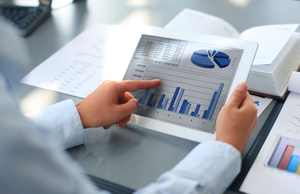 A few years ago I wrote about an MIT spin-out called Sociometric Solutions. They had taken a leaf out of the Moneyball playbook and developed ID badges for employees to wear at work. The badges come with a sensor in built within it that allows managers to track various aspects of the employees behavior.
A few years ago I wrote about an MIT spin-out called Sociometric Solutions. They had taken a leaf out of the Moneyball playbook and developed ID badges for employees to wear at work. The badges come with a sensor in built within it that allows managers to track various aspects of the employees behavior.
"'Moneyball' is putting numbers on behavior and using that data to build a baseball team. But what if I could say, 'Here's how you need to talk to customers, here's how people need to collaborate with each other, and here are the things that lead to outcomes such as turnover, sales, and job satisfaction,'" the founders said at the time. "Individuals can use that data to boost performance, and a company can use that to help set up an environment where everybody's going to succeed."
Growth in human capital analytics
Whilst Sociometric Solutions was launched a few years ago, a new report from the Institute for Corporate Productivity suggests that such employee monitoring is on the rise.
The paper, called The Promising State of Human Capital Analytics, reveals that nearly 70% of organizations are now using some form of human capital analytics to monitor performance amongst employees.
"Successful companies tend to be those that purposefully use data to anticipate and prepare rather than to react to daily problems," the researchers say. "The future focus of professionals in the human capital analytics field will increasingly be on using analytics to guide strategic decisions and affect organizational performance."
The report goes on to report that senior managers support the data they get back from their analytics projects, even though studies suggest they don't always use data when making their own decisions!
The use of data is not without risk however. For instance, another paper from Wharton Business School explored the use of performance data to rank employees at a furniture company.
The analysis revealed a clear dichotomy in how employees thought they would respond and how they actually did. Nearly all employees thought being compared with their peers would help to motivate them to new heights, but the reality was usually quite the opposite.
The researchers believe this is because when we're unsure of how our performance compares with our peers we simply get on with the task at hand and don't worry about our ranking. What's more, such ignorance also prompts us to work better as a team than focusing on our individual performance.
A data driven future
Nonetheless, it seems inevitable that data will play an ever expanding role in the workplace, and the i4cp paper provides a number of case studies from companies such as HSBC, Intel and Google on how they got started with their own people analytics ventures, and the results they've achieved from them.
"Organizational effectiveness is often the initial and primary focus of workforce analytics," the authors conclude. "But, we'll continue to see an increase in executive support and commitment particularly as companies become more sophisticated with predictive measures, and management teams begin to rely on people data as much as they do on financial data today."
Does your own workplace utilize workplace analytics? I'd love to hear your own stories, so do please share them in the comments below.
